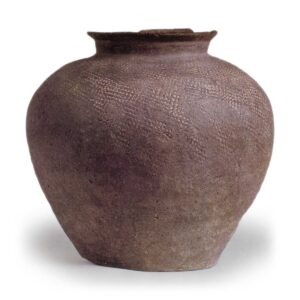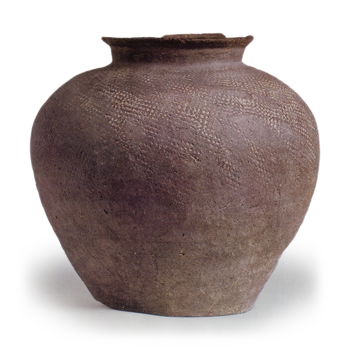
Excavated from Yashima, Kurashiki City, Okayama Prefecture
13th century
Height 23.8cm, mouth diameter 12.9cm, body diameter 24.8cm, bottom diameter 13.7cm
Kameyama Shrine
If Suzu ware is the representative of medieval pottery in eastern Japan that followed the Sue ware production technique, then Kameyama ware from western Okayama is probably the representative in western Japan. However, while Suzu ware is hardened and blackened, Kameyama ware is grayish or grayish-brown in color and somewhat similar to tile ware. It is relatively thin, with the upper rim of the short neck bent outward and the shoulders protruding, and the bottom is large and stable. This is a typical example of a Kameyama jar from the mid Kamakura period. It is made by winding up clay cords. The surface of the vessel is shaped with a lattice pattern, but the beaten patterns on the lower half of the body have been removed by cutting and adjusting the surface. There is a geta mark on the bottom. The firing process is a little too aggressive, and the weight is surprisingly light. Among Kameyama ware, it belongs to the thin and fine category.



